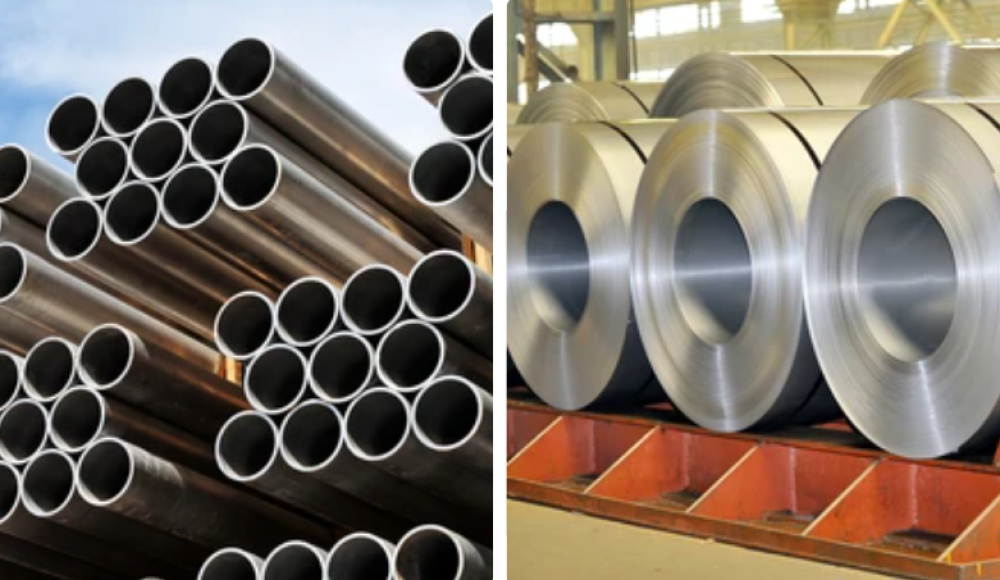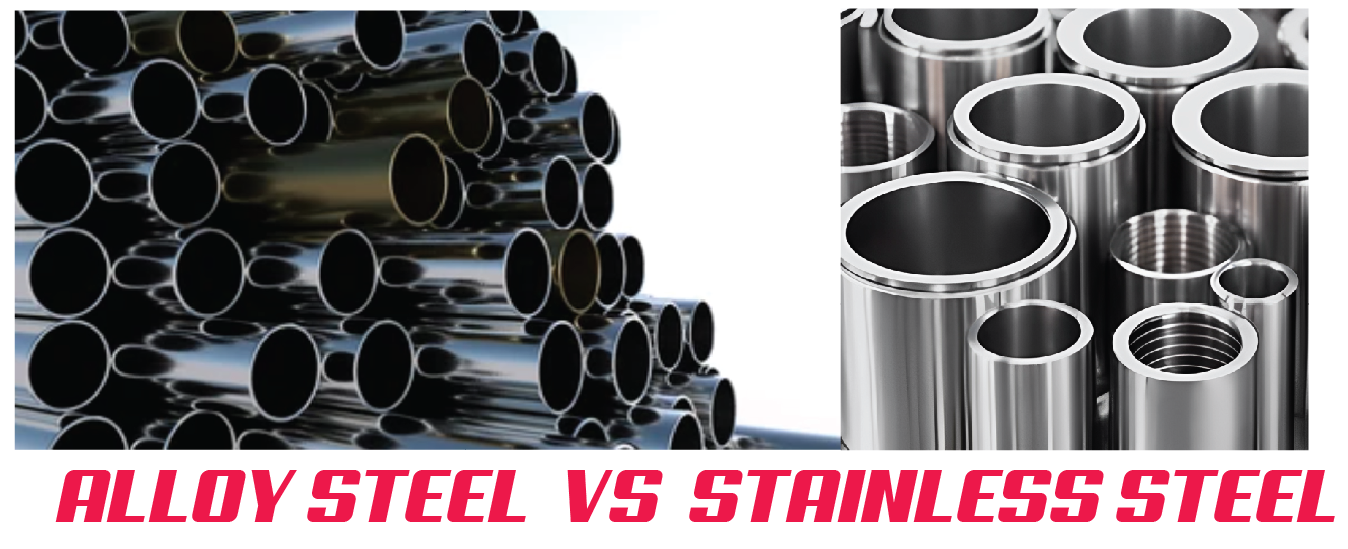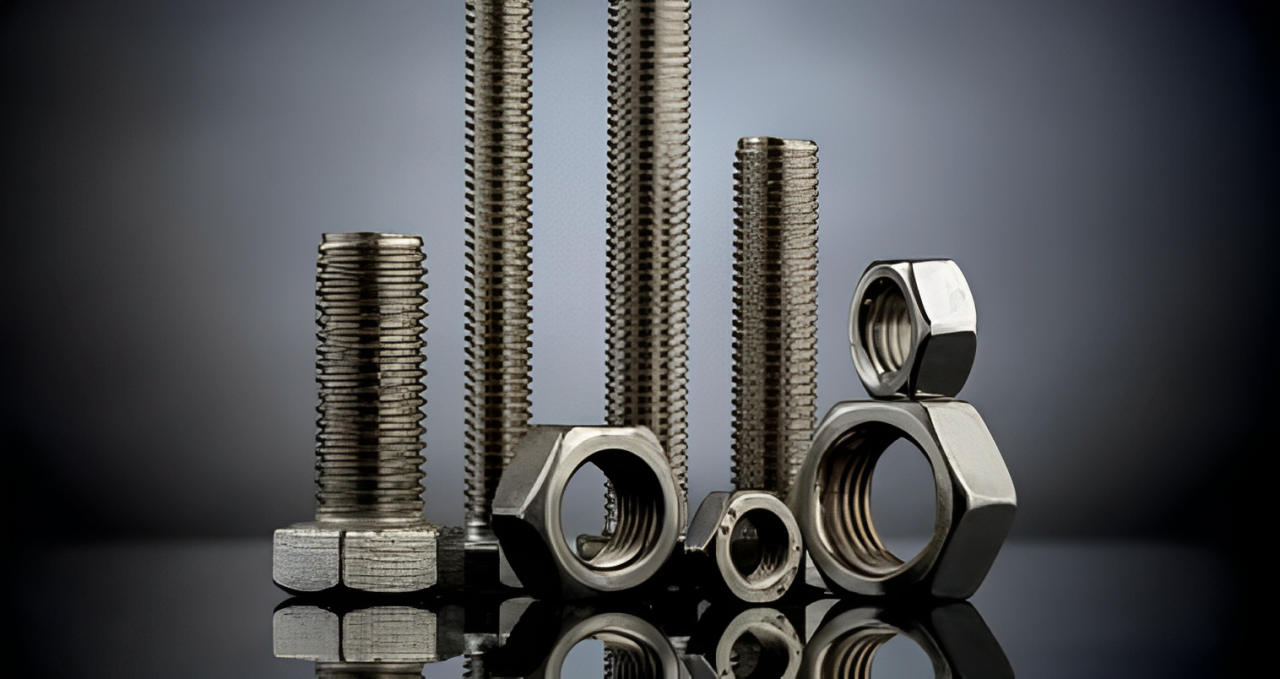広く知られているように 鋼鉄 多くの産業部門で役割を果たします, 建設用, さまざまな製造, 自動車産業. これらの製品は、柔軟な特性と高レベルの耐久性のために使用するためにカタログ化されているため、今日利用可能なさまざまな種類の鋼鉄グレードには、他の製品の間で合金鋼とステンレス鋼が含まれます。. しかし、各タイプのスチールには、特定のアプリケーションに適格なユニークな機能があります. 記事上で, あなたは、合金鋼とステンレス鋼の材料が何であるかを発見します, 彼らの種類の違い, そして、あなたの部品生産に各素材をいつ使用するかを決定するための有用なヒント.
合金鋼とは何ですか?
合金鋼は、1つ以上の合金要素を持つ鋼を指します, つまり. マンガン, クロム, ニッケル, モリブデン, バナジウム, とシリコン. これらの要素の量は一般に異なり、通常は1〜50パーセントの間で構成されます. 直接的な結果として, 強度の特性を改善します, 作業性, 硬度, 腐食, そして着用. 合金鋼は、強さと高いリターンを含む高いリターンを要求する産業に適用されます; 航空, 自動車, および機械セクター.
ステンレス鋼とは?
ステンレス鋼は、建設で使用される材料です。なぜなら、それはそれ以下を含む鋼の合金であるため 10, または 5% クロム. それで, CR2O3酸化物層を介して未解決の腐食保護を保証します. また、ニッケルを含む他の成分もあります, 錆を収縮しない能力も高くモリブデン, 染色, と腐食. それで, 顧客が大切にする最も重要な資質は、その外観です, 衛生特性, そして靭性, それが、多くの枝でステンレス鋼が要求される理由です. これらには食品産業が含まれる場合があります, 医療機器の生産, 工事, 等.
合金鋼の種類
それで, これが合金鋼とその組成のさまざまな形態です, プロパティ, 業界での使用.
| 合金鋼の種類 | 説明 | 主要なプロパティ | 代表的なアプリケーション |
| 低合金鋼 | 含まれています < 5% 合金要素 | 機械的特性の改善 | 構造用途, 橋, 建物 |
| 高合金鋼 | 含まれています > 5% 合金要素 | 優れた硬度と耐摩耗性 | 高性能アプリケーション, 産業用ツール |
| クロモリ鋼 | クロム - モリブデン合金 | 高強度, 耐熱性 | 航空宇宙部品, 自動車部品 |
| ニッケル合金鋼 | タフネスのニッケルが含まれています | 低温での優れたタフネス | 極低温アプリケーション, 圧力容器 |
| マンガン鋼 | インパクトの高い強さで知られています | 耐摩耗性 | 部品を着用します (例えば, ロッククラッシャー, 鉄道線路) |
ステンレス鋼の種類
それで, 次の表で、さまざまな種類のステンレス鋼について説明しましょう.
| ステンレス鋼の種類 | 説明 | 主要なプロパティ | 代表的なアプリケーション |
| オーステナイト系ステンレス鋼 | 最も一般的なタイプ; 非磁性です | 優れた耐食性, 成形性 | キッチン機器, 医療機器 |
| フェライト系ステンレス鋼 | クロムと小さなニッケルが含まれています | 中程度の耐食性, 優れた形成性 | 自動車部品, 家電製品 |
| マルテンサイト系ステンレス鋼 | より高い炭素が含まれています; 硬さで知られています | 高強度と硬度 | 手術器具, 切削工具 |
| 二相ステンレス鋼 | オーステナイトとフェライトの特性を組み合わせます | 高強度, 優れた耐食性 | 石油およびガス産業, 化学処理 |
| 沈殿ステンレス鋼の硬化 | 熱処理によって強化されました | 例外的な強さ | 航空宇宙部品, 高性能ツール |
合金鋼との比較対. ステンレス鋼
時々、合金鋼とステンレス鋼という用語に出くわします. それらの間の大きな違いについて説明しましょう.
1. 耐食性
ステンレス鋼は、クロムの内容による腐食に対して非常に免疫があります. 酸化物層を形成する傾向があり、水分やその他の腐食環境に適しています. しかし, 合金鋼が同じレベルの抵抗を提供するためには、本質的に非常に耐性ではない治療中に置かなければなりません.
2. 強さ
使用する合金要素のタイプに応じて, 高性能を強化するために、合金鋼の引張強度を改善できます. さらに, ステンレス鋼は炭素鋼よりも強度が高く、合金鋼よりも強くありません.
3. 料金
ステンレス鋼は、クロムとニッケルを使用し、それを処理する際の難易度により、合金鋼よりもわずかにコストがかかります. 例えば, 合金鋼の物品は、より安価な合金剤を採用できるため、頻繁に安くなる可能性があります.
4. 美的
ゴムは優れた耐摩耗性を持っています耐性は化学的に耐性があり、主にストッキングで使用されます. ステンレス鋼は光沢があります, 洗練された外観と外観が重要になる場所で使用されます, つまり. ポール. しかし, 合金鋼は視覚的に魅力的ではありませんが、より機能的です.
5. 磁気特性
ほとんどのステンレス鋼は磁気引力を感じず、磁気が重要である使用に適しています. ほとんどの鋼のように, 多くの合金シートには「磁気応答」として知られているものがあります, 産業用途では望ましいことがあります.
6. 耐久性
合金鋼は、高ストレスに対処するために開発され、圧力下でそれを強くて耐久性があります. ほとんどのステンレス鋼は腐食に対して良好な耐性を提供しますが、その機械的特性は高負荷の下で高強度合金鋼を持っていない場合があります.
7. 耐熱性
熱応力が問題であるその後の場合, ステンレス鋼は通常、高温下で形状を失わないため、パフォーマンスが向上します. しかし、その定式化に応じて, 合金鋼を使用しています, 高温強度のために特別に開発されました.
8. 作業性
合金鋼は、洗練された作業を必要とする複雑な構造を設計するときに、特に作業が簡単です. ステンレス鋼, さらに強い, また、硬度のために重く、より困難です. その上, 電磁作業硬化に問題があります.
| 特性 | 合金鋼 | ステンレス鋼 |
| 耐食性 | 特別な治療が必要です; 耐性が低い | クロム含有量により非常に耐性があります |
| 強さ | 高い引張強度 (まで 250,000 psi) | 中程度の強さ (まで 200,000 psi) |
| 料金 | 一般的にはもっと手頃な価格 ($0.50 - $ 2.00/lb) | より高価です ($1.50 - $ 4.00/lb) |
| 美的 | より機能的です; 通常、マット仕上げ | 光沢があります, 洗練された外観 |
| 磁気特性 | 磁気特性を保持します | ほとんどのグレードは非磁性です |
| 耐久性 | 極端なストレスの下で優れています | 腐食に対して耐久性があります |
| 耐熱性 | 構成に基づいて異なります; 最大1,200°F | 最大1,500°Fまでの完全性を維持します |
| 作業性 | 機械加工と製造が簡単です | 溶接と形状がより挑戦的です |
機械加工プロジェクトに理想的な鋼を選択する際に考慮すべきヒント
以下は、プロジェクトに理想的な鋼を選択する際に考慮する重要な要素です.
- 耐食性: 水や化学物質にさらされた領域にステンレス鋼を選択してください.
- 強度と耐久性: 高い引張強度とあるレベルの靭性を持つ必要がある場合は、合金鋼を選択してください.
- 料金: 合金鋼のコストはステンレス鋼のコストよりも低い.
- 美的要件: ステンレス鋼は、最終製品が磨かれた審美的に心地よい要素を必要とするプロジェクトで使用する必要があります.
- 被削性: 特定の種類の両方の材料を使用するのがより困難な場合があるため、選択は特定のプロジェクトに望ましいものに依存します.
合金鋼の用途
それで, これが合金鋼の一般的な用途の一部です:
- 自動車部品: タフで強い素材なので、ギアシャフトと車軸に人気.
- 航空宇宙部品: 高温特性のため、航空機の着陸装置とタービンブレードに適しています.
- 工事: 橋や建物などの高強度の構造部品で採用.
- ツーリング: ドリルビットで人気があります, のこぎり, このタイプの鋼の硬度の結果としての工作機.
- 油 & ガス産業: 高い緊張強度と高温でのサービスのために、パイプラインと圧力容器に適用されます.
ステンレス鋼の適用
それで, ステンレス鋼の一般的なアプリケーションの一部は次のとおりです:
- 医療機器: 腐食を避け、衛生特性を持つ能力のために、手術器具とインプラントが適用される場所で使用されます.
- 食品加工: 冷蔵庫に広がっています, ストーブ, キッチン用品, 衛生的な特徴のために食品包装.
- 工事: 外部標高の構築に適用されます, 屋根, 硬度と装飾的な外観によるバルコニー.
- 自動車: 排気システムとトリムで利用されます, 腐食しないので.
- 化学処理: タンクに適用されます, バルブ, 腐食化学物質を扱うパイプ.
合金鋼の長所と短所
以下は、合金鋼の長所と短所です:
利点:
- この材料は強度と重量の比率が高いことを意味し、安全でエネルギー効率が高いことを意味します.
- 優れた靭性.
- その機械的特性における大きな汎用性.
- 良い耐摩耗性.
- ストレスを保持するアプリケーションのさまざまなアプリケーションでの有用性.
制限事項:
- 錆びや腐食を防ぐためにコーティングまたはメッキをする必要があります.
- マシンを使用して解析する方が手ごわい場合があります.
- 炭素鋼よりも非常に高価な材料です.
- うまくいかなければ錆びやすい.
- ステンレス鋼のように目を楽しまない.
ステンレス鋼の長所と短所
利点:
- 耐食性が大きくなります.
- 掃除して保守しやすい.
- 魅力的に設計された表面の光沢のある仕上げ.
- 高温耐性.
- 耐久性があり、長持ちします.
制限事項:
- アイテム構造のための合金鋼材料よりも費用がかかります.
- 一部のグレードは、溶接および機械を溶接するのが困難です.
- ストレス腐食亀裂に対して脆弱です.
- 一部のアプリケーションでは、合金鋼よりも強くありません.
- いくつかの種類の鋼よりも重い.
合金鋼を選択するタイミング?
- あなたのプロジェクトがより多くの強さとタフネスを要求するとき.
- 高温または重い負荷条件にさらされるアプリケーションの場合.
- コストが見落とすことができず、最小限に抑える必要がある問題である場合.
- 腐食が主要な要因ではない場合, または、そのような特別な治療が可能な場合.
- 疲労と摩擦を経験する部品.
ステンレス鋼をいつ選択するか?
- アプリケーション用, 腐食性環境に対する高い抵抗のための要件があるところ.
- 物質的な問題の外観と清潔さのとき.
- セラミックは、化学物質や水分と接触する地域での使用に大きく依存しています.
- 建物の寿命が重要なプロジェクトでは.
- 滑らかで非磁性材料です, 製品建設製造で高く使用されています.
結論
結論は, 合金鋼Vs. ステンレスはいくつかの機能を提供し、さまざまな用途に推奨される場合があります. ストレスが高くなる可能性が高い場合、合金鋼が使用されます. このほかにも, 材料の強度と靭性にとって重要です. しかし, ステンレス鋼は、洗練された外観と衛生が腐食抵抗と同様に重要な電解アプリケーションで使用する必要があります. これらの2つの資料とそれらの違いを評価すると、適切な情報が得られます. それで, スチールを選択するときに、プロジェクトに最適な素材を選択できます.
よくある質問
1. 合金鋼とステンレス鋼の違いは何ですか?
合金鋼はその高強度と靭性で有名ですが、ステンレス鋼は腐食攻撃に対する耐性でよく知られています.
2. どの鋼が高温で使用するのに適していますか?
ステンレス鋼よりも熱耐性特性が優れているため、熱が関与する場合は合金鋼が好まれます.
3. ステンレス鋼の磁気です?
たとえば、マルテンサイトステンレス鋼は磁気ですが、オーステナイトステンレス鋼はそうではありません.
4. 鋼鉄の錆を合金化できます?
はい, 合金鋼が適切な腐食 - 耐性コーティングによって保護されていない場合、それは事実です, その後、錆びます.
5. ステンレス鋼は、合金鋼よりも機械加工するのが難しいです?
ステンレス鋼の機械加工は、その固有の強度のために難しい場合があります, これは鋼鉄のグレードに依存しますが.
6. どの鋼がより高価な合金鋼またはステンレス鋼のものですか?
ステンレス鋼は、より多くのクロムとニッケル組成のため、通常の炭素鋼よりもコストがかかります.
7. どの産業が適切な合金鋼で作られた製品であるか?
合金鋼は航空宇宙で使用できます, 自動車, 工事, 石油産業.











1 「」について考えました合金鋼とステンレス鋼: 包括的なガイド”